Page Index
Last Updated: Apr 24, 2009
INTRODUCTION
O.T. Quotation Structure - Matthew
Examining Matthew's O.T. Quotation list, we see that he consciously adopts the same basic O.T. Quotation Pattern, that Luke used, and also the simpler Forward Sequential method. Like Luke, Matthew avoids the Chiastic (two-way) patterns found in the earlier, more primitive Semitic Gospels of Mark and John. Instead, Matthew wants us to notice he has used the same format as Luke, so that we will also appreciate the key changes he has made.
Introductory Section
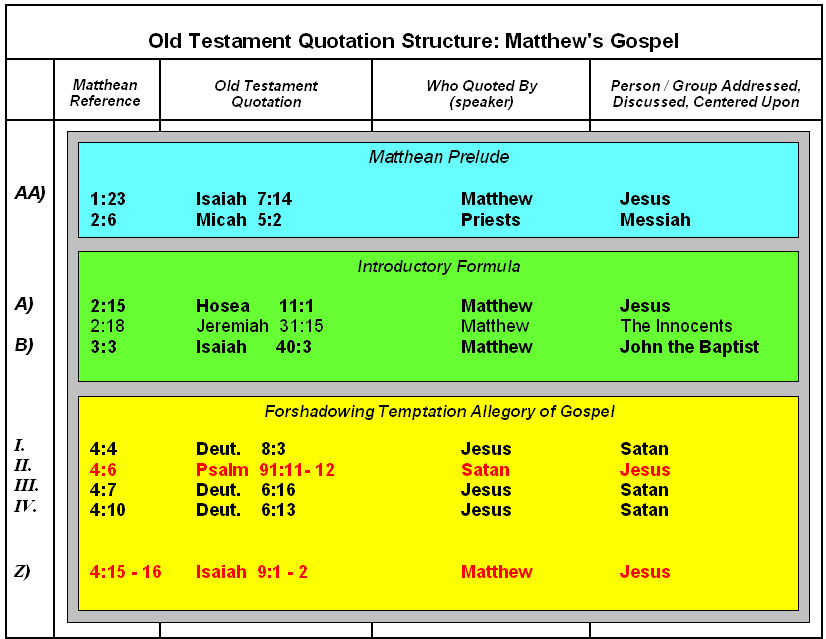
Matthew's program is again to expand the Gospel, this time to compliment Luke's fuller text. But Matthew also has some other sub-agendas that account for special rearrangements, alterations and substitutions of key materials (see our discussion in the Synoptic articles).
Matthew adds supplementary material to the Infancy Narrative (e.g., Herod's Slaughter of the Innocents, etc.). As a result, his O.T. Quotation List is also expanded with extra references.
We have marked the added O.T. Quotation Groups with AA) and Z) respectively. For most of the following sections, Matthew will continue to mark the end of groups of O.T. Quotations with an extra 'signature' quotation by himself in the narrative.
Main Gospel: Opening Section
Matthew now adds his famous Sermon on the Mount at the beginning of the next major division of his Gospel. His choice of insertion point for his supplementary material is different than Luke's, because he has organized his collection of Jesus' teaching into one giant Super-Sermon, suitable for reading in synagogue or church.
In many cases, the original context of Jesus' teaching has been completely dropped. But it is not lost. Anyone wishing to get the background for the sayings can consult Mark or Luke, or even John. But now the sayings take on a universality and existance of their own, to be applied to the Church internally as guideline and rule of law, a kind of handbook for Christian living.
Main Gospel: Opening Section
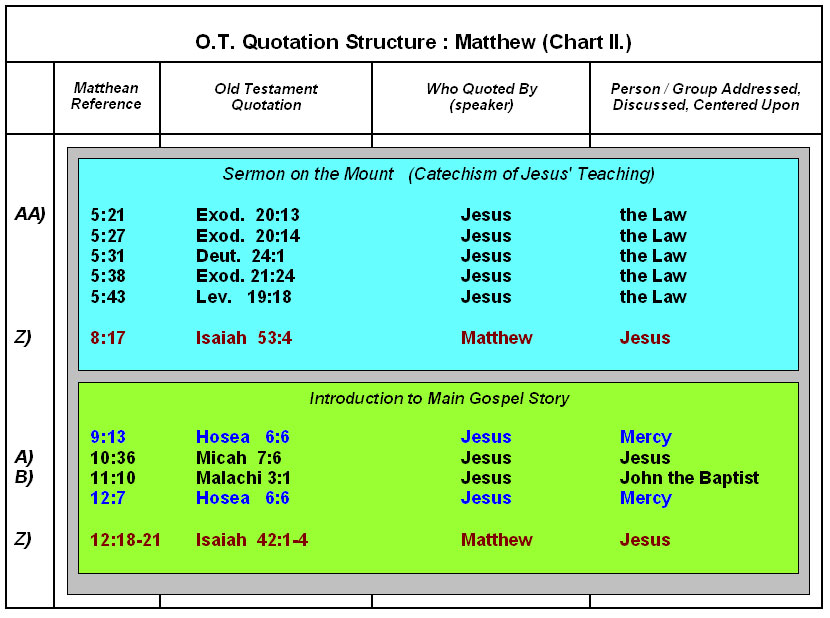
Matthew follows the Sermon on the Mount with the first section of the Gospel Proper. This, like Luke's Gospel has the standard double-quotation, one for Jesus and one for John the Baptist. This time however, again Matthew has expanded his narrative, and bracketed the Introductory Quotations with Hosea 6:6, spoken by Jesus.
Again, Matthew marks off the end of the first two sections with a final 'Signature' quotation in the narrative, from Isaiah (marked as Z) in our chart.).
Main Gospel: Final Sections
Now come the Four Thematic Sections, meant to align with the Temptation Allegory. The central two sections have been expanded with many more scriptures, extending Luke's less ambitious plan (which had only included Mark's quotations for completeness).
One of the goals of Matthew's Gospel is to give more O.T. references to the Law (Torah), and provide more prophetic fulfillments for the reader. This naturally leads to a much larger list of O.T. quotations overall, which must be worked into the Lukan Plan in an organized fashion.
Main Gospel: Final Sections
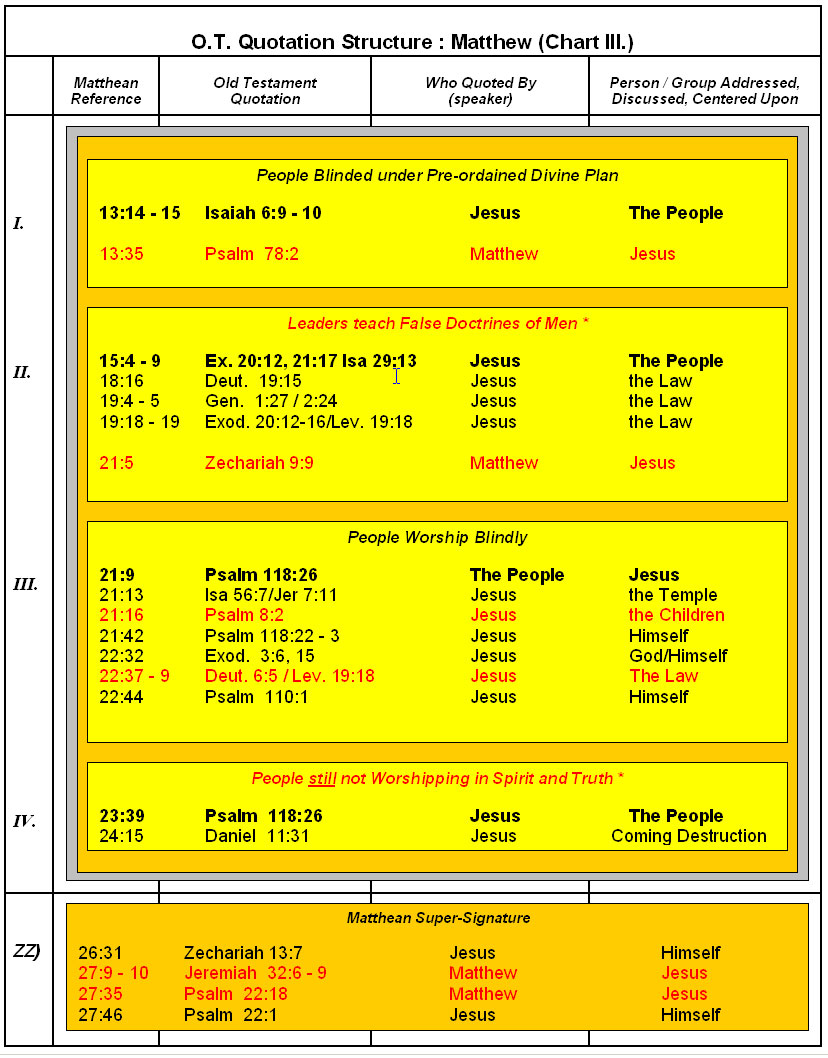
Matthew now adds a 'super-signature' to finish off the structure. We have highlighted in red some of the noteworthy differences between Matthew's final pattern, and Luke, his original base. We will leave the discussion of the dislocation of key sections of the structure for the next article.
Matthew's O.T. Quote
Structure
I. Chart
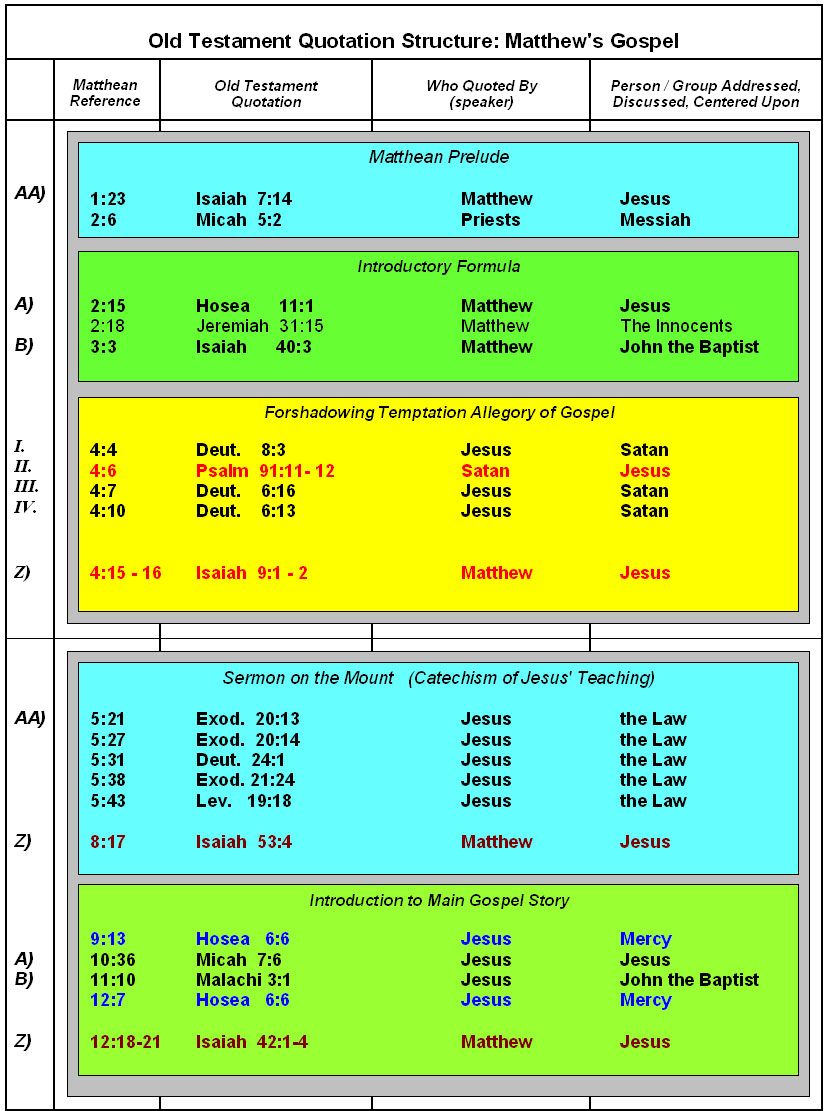
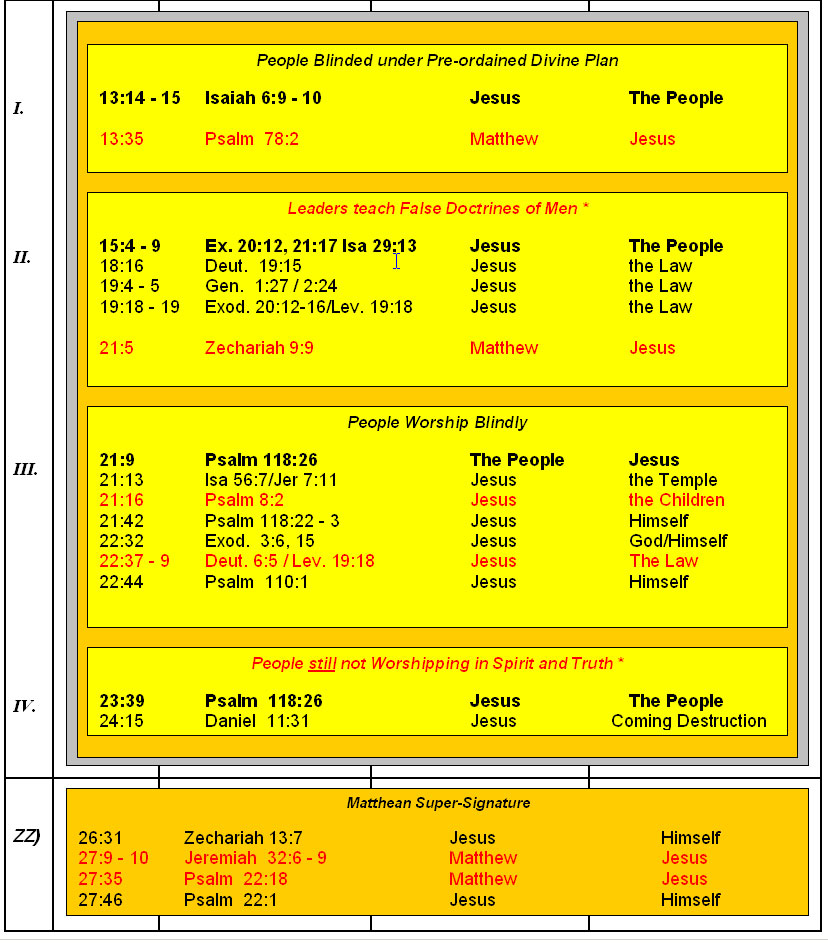
II. Comments
The Full chart here is given in two parts (.jpgs). The key rearrangement in regard to the O.T. Quotation Structure will be discovered by comparing this chart to the one for Luke's Gospel, and noting the difference in emphasis that changes in the political/religious relationship between the emerging Church and the Jewish authorities had caused.
Summary
Final Development
We see here the natural progression and development of structure, techniques, and ultimately ideas, which provide the motivation to make organizational changes in the teaching material (and minor chronological ones) of the Gospel story. At the same time, more artistic, but less useful methods (such as Hebrew Chiasm) are abandoned in the practical execution of these projects designed to 'update' the Gospel message for apologetic and even polemic purposes.
